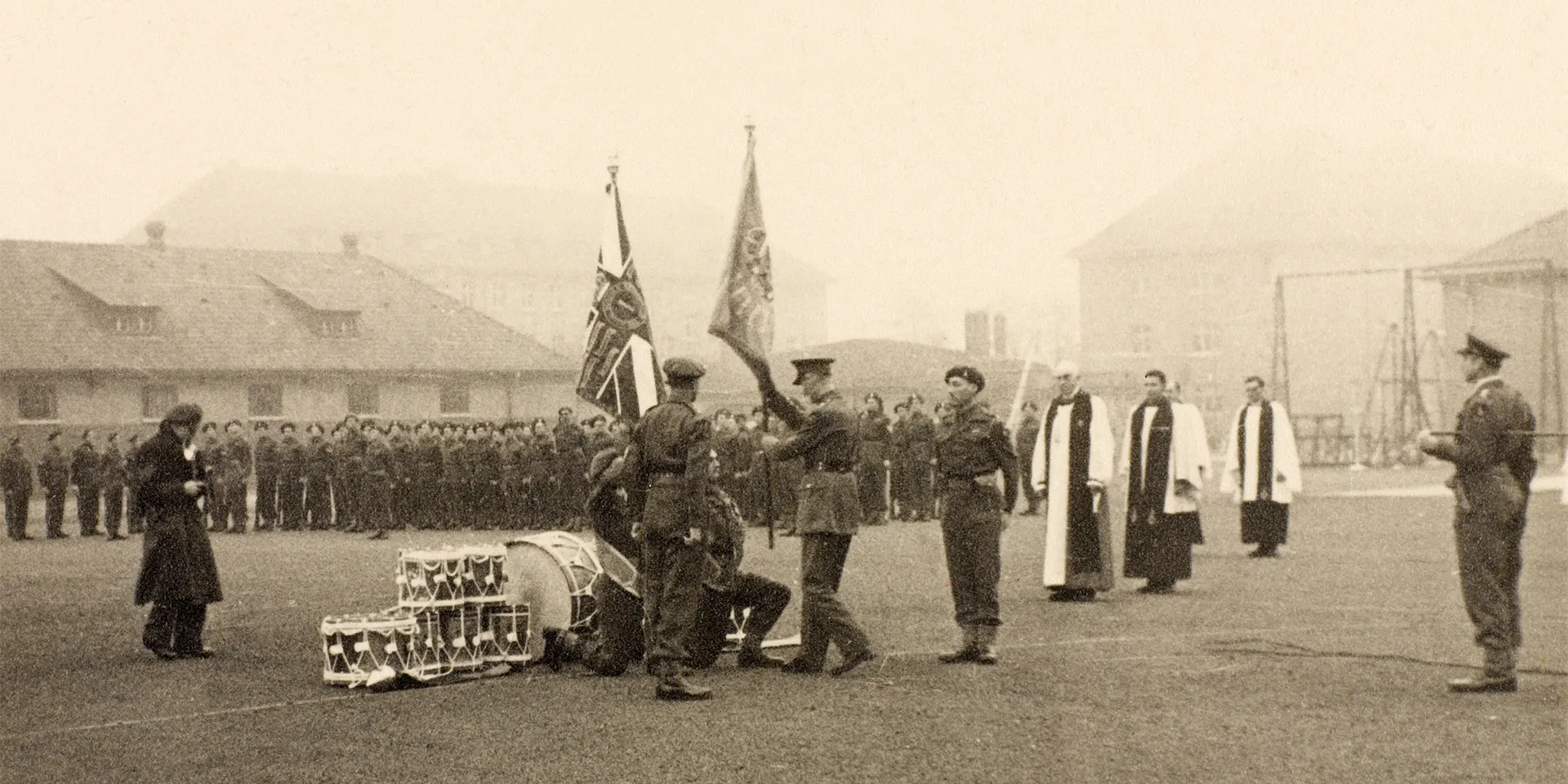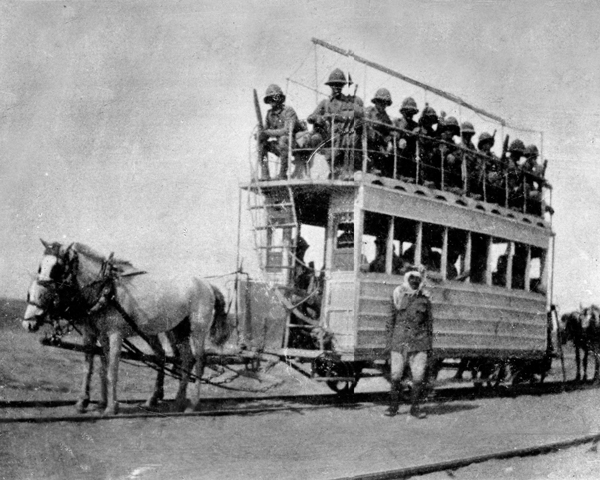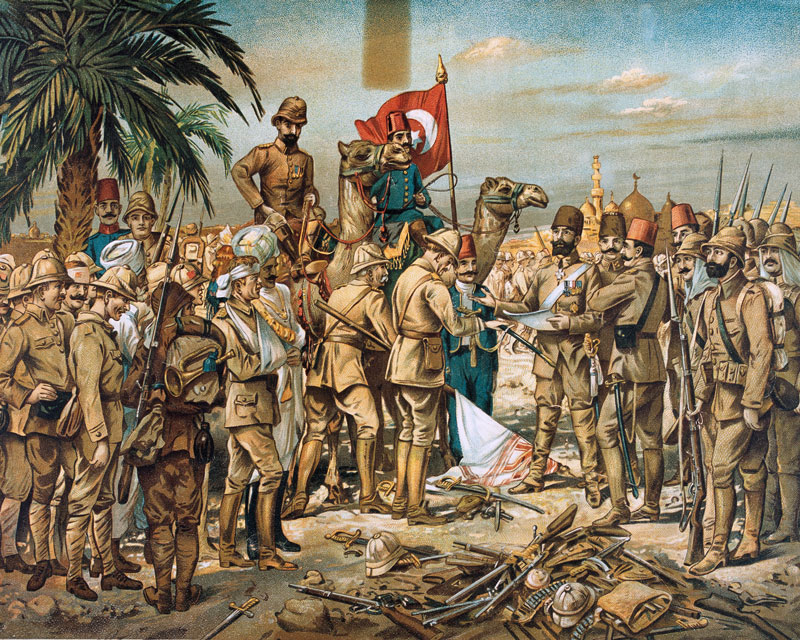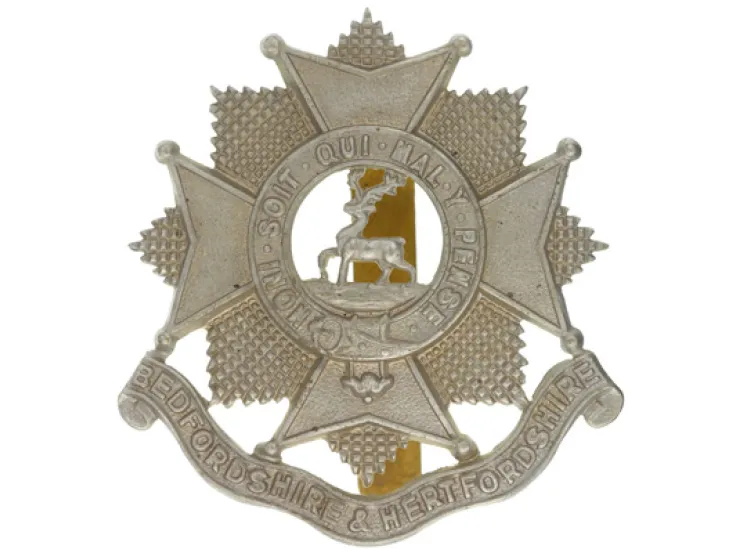
Members of 1st Battalion, The Royal Norfolk Regiment, c1946
Origins
In June 1685, Henry Cornewall raised a regiment at Gloucester to help King James II suppress the Duke of Monmouth's rebellion. Four years later – with James now in exile following the ‘Glorious Revolution’ (1688) - it was sent to Ireland to fight against him, seeing action in the key battles at the Boyne (1690) and Aughrim (1691).
Early 18th century
During the War of the Spanish Succession (1702-13), the regiment was sent first to Flanders in 1702, then to mainland Spain in 1704. The entire unit was captured at Castelo de Vide, on the Spanish-Portuguese border, and taken back to France as prisoners of war.
Following a prisoner exchange, it returned to Spain, serving in the defeat at Almanza in 1707. Legend has it that the regiment’s association with the figure of Britannia, which formed part of its official insignia from 1799, dates back to this campaign.
Over the next 40 years, the regiment served in Ireland, Minorca, Gibraltar and the West Indies. In 1751, it was renamed the 9th Regiment of Foot.

A soldier of the 9th Regiment of Foot, c1742
Revolutionary Wars
In May 1776, the 9th Foot was shipped to Quebec for service in the American War of Independence (1775-83). It was captured at Saratoga the following year and interned for the rest of the conflict. In 1782, just before its release, it was given a county association with East Norfolk.
In 1788, it began an eight-year deployment in the West Indies. This coincided with the outbreak of the French Revolutionary Wars (1793-1802), during which the regiment took part in the captures of Tobago (1793), Martinique (1794) and St Lucia (1794).
In 1799, it was sent to the Low Countries to fight in the Helder campaign. That same year, it raised two additional battalions from militia volunteers. Each of these lasted only three years and was mainly used for raids on the Spanish coast and for service in Britain and Portugal.
Napoleonic Wars
The regiment raised a new 2nd Battalion in 1804. This served alongside 1st Battalion in the Peninsular War (1808-14), before disbanding in 1815.
In 1805, 1st Battalion was shipwrecked off the French coast on its way from Ireland to Germany. All 300 survivors were captured.
By 1809, it was back in action, this time on the Iberian Peninsula. It was the last British battalion to evacuate the city of Corunna after burying Lieutenant-General Sir John Moore, who had been fatally wounded there.
Field Marshal Sir Colin Campbell began his long military career during this period, when he was commissioned into the 9th Foot in 1808. He served with the regiment at Vimeiro (1808), Corunna (1809), Barrosa (1811) and Vitoria (1813), and was wounded leading the 'forlorn hope' during the storming of San Sebastian (1813).
1st Battalion’s next deployment was to North America for the closing stages of the War of 1812 (1812-15). It returned to Europe too late to take part at Waterloo (1815), but it joined the Army of Occupation in France.
Victorian era
Following further service in the West Indies, Britain and Ireland, the 9th Foot began its first Indian posting in 1835. It spent 12 years there, fighting in the First Afghan War (1839-42) and the First Sikh War (1845-46). The latter service included Ferozeshah (1845) and Sobraon (1846).
In 1854, it served at Sevastopol during the Crimean War (1854-56), before moving to Canada two years later.
The regiment raised a 2nd Battalion for a third and final time in 1857. Its early service included guarding the European settlement at Yokohama during the Japanese Civil War (1863-68). Then, in 1874, it arrived in India, joining the Jowaki expedition (1877-78) on the North-West Frontier, and fighting in the Second Afghan War (1878-80) and the 1888 Burma campaign.
In 1889, it was replaced in India by 1st Battalion, which had spent the previous three decades in the Mediterranean, Gibraltar, South Africa, Ireland and Britain.
In the Army reforms of 1881, it was affiliated with the entire county of Norfolk and was accordingly renamed The Norfolk Regiment. As it already had two battalions of its own, it wasn’t merged with any other unit.
In January 1900, the regiment raised a 3rd (Militia) Battalion for service during the Boer War (1899-1902) in South Africa. This fought at Poplar Grove (1900) and several other actions. It was joined there by 2nd Battalion later that year. The latter also served in South Africa from 1905 to 1908.
First World War
1st Battalion returned home from India in 1907. It deployed to the Western Front on the outbreak of the First World War (1914-18), remaining there throughout the conflict.
Meanwhile, 2nd Battalion was back in India when the First World War started. In November 1914, it was sent to Mesopotamia, but suffered such heavy casualties that it had to merge with 2nd Battalion, The Dorsetshire Regiment in February 1916, forming ‘the English Battalion’. Two months later, this new battalion, nicknamed 'the Norsets', was captured at Kut al Amara.
In July 1916, reinforcements enabled 2nd Battalion, The Norfolk Regiment to re-form. It stayed in Mesopotamia for the rest of the war.
The regiment also raised 11 Territorial battalions and four New Army battalions during the conflict. Two of these landed at Gallipoli in 1915. One of them, 1/5th Battalion, included the Sandringham Company, raised on the royal estate. Other battalions from the regiment served in Palestine and on the Western Front.
Interwar period
1st Battalion spent the interwar years in Belfast, the West Indies, Egypt and Shanghai, before returning to India in 1929. 2nd Battalion arrived back in England in 1923 after brief spells in India, Iraq and Aden.
The regiment was granted a ‘Royal’ prefix in 1935 to mark King George V’s silver jubilee, as well as its own 250th anniversary, becoming The Royal Norfolk Regiment in the process.
Second World War
1st Battalion was still in India on the outbreak of the Second World War. It remained there until July 1940, when it returned home.
It landed in Normandy on D-Day (6 June 1944). In the ensuing campaign in North-West Europe, the regiment won two of its five Victoria Crosses of the war, the highest number for any single regiment.
Meanwhile, 2nd Battalion joined the British Expeditionary Force in September 1939. On its retreat to Dunkirk in May 1940, 97 of its men were captured and shot by an SS unit at Le Paradis. The Territorial 7th Battalion also served in France, where most of its soldiers were captured.
The 2nd Battalion remained in Britain until June 1942 when it was shipped to India and Burma. There it fought at Imphal-Kohima (1944) and many other engagements.
The regiment also raised several hostilities-only battalions. These were mainly used in home defence roles and as a source of reinforcements for the overseas battalions.
Three of its Territorial battalions (4th, 5th and 6th) were captured at Singapore in 1942. All three had earlier been engaged in home defence roles until 1941 when they deployed to the Middle East.

1st Battalion, The Royal Norfolk Regiment being presented with new colours, 1946
Post-war deployments
In 1948, it became a single-battalion regiment within the new East Anglian Brigade. It took part in the occupation of Germany with the British Army of the Rhine, before going on to serve in Korea during 1951-52. It then served in Hong Kong and on Cyprus (1954-56) during the EOKA emergency.
Legacy
It returned to Germany in 1956 and was still there three years later, when it amalgamated with The Suffolk Regiment to form the 1st East Anglian Regiment (Royal Norfolk and Suffolk). This, in turn, converted into a battalion of The Royal Anglian Regiment in 1964.
Regimental museums
The National Army Museum works with a network of Regimental and Corps Museums across the UK to help preserve and share the history and traditions of the Army and its soldiers.
Discover more about The Royal Norfolk Regiment by visiting the Royal Norfolk Regimental Museum at Norwich Castle.















